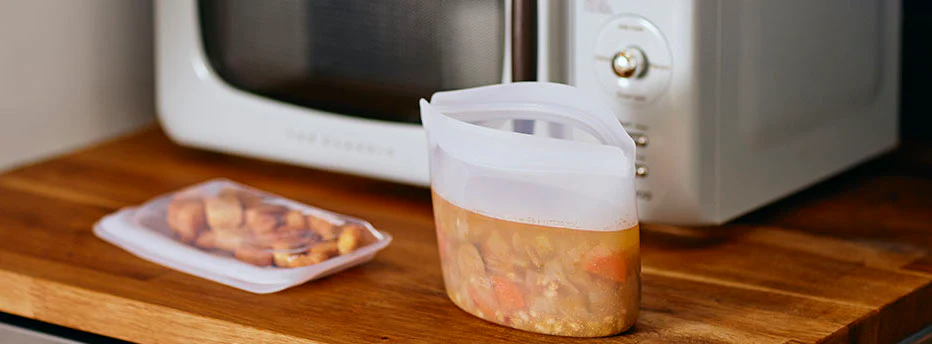Are Steam-In-Bag Foods Safe? Experts Weigh In on Microwaving Plastic

Steam-in-bag meals — from vegetables to grains — are a staple of modern convenience. With just a few minutes in the microwave, a hot side dish is ready to serve, no chopping or cleanup required. But as concerns about microplastics and chemical exposure grow, health experts are urging caution when it comes to heating food in plastic packaging.
“These products are marketed as safe, but long-term effects of heating plastics are still under scientific scrutiny,” said Dr. Bryan Quoc Le, food scientist and founder of Mendocino Food Consulting. “Even when BPA is absent, there are other additives we know less about.”
The Benefits — and the Risks
There are some clear benefits to steam-in-bag packaging. According to Dr. Darin Detwiler, a food safety expert at Northeastern University, the minimal handling and vacuum-sealed design reduce contamination risk and extend shelf life. However, the concern lies in what might be released when these plastic bags are exposed to heat.
Microplastics — tiny fragments of plastic — are found in everything from drinking water to air. While their long-term health effects remain unclear, early research links them to inflammation, hormone disruption, and potential immune issues.
“These steam bags are made with food-grade plastics that meet FDA standards,” Le noted. “They’re tested to ensure they don’t leach harmful chemicals like BPA or phthalates.” But even within safe limits, consumers may still be exposed to trace chemicals.
Dr. Jamie Alan, a toxicologist at Michigan State University, echoed that sentiment: “We interact with microplastics daily. While steam-in-bag foods are generally safe, we still don’t fully understand the cumulative health impact.”
Should You Stop Using Them?
Experts don’t suggest avoiding steam-in-bag foods altogether, but they do recommend practical precautions.
“There’s not yet conclusive evidence about health risks,” said Detwiler. “But limiting plastic exposure — especially with heat — is a smart move when possible.”
Dr. Alan advises a balanced approach: “If you regularly use steam bags, perhaps balance that by reducing plastic use elsewhere, like avoiding plastic water bottles.”
Safer Cooking Alternatives
If you’re a frequent user, switching to a safer method might be worth the small extra step. Transferring frozen foods from plastic bags into glass or ceramic containers before microwaving can reduce exposure to plastic degradation.
Still, Detwiler warns, “Instructions on the bag are designed for cooking inside the bag, where steam circulates differently. If you transfer food, use a food thermometer to ensure it hits 165°F (74°C) for safety.”
Covering the dish with a microwave-safe lid and stirring halfway through can also help distribute heat evenly and prevent cold spots that allow bacteria to survive.
Steam Bag Safety Guidelines
When using steam-in-bag products, experts recommend the following safety practices:
-
Follow package instructions closely: Heating too little can leave bacteria like Salmonella or Listeria alive, while overheating can increase chemical leaching.
-
Don’t reuse the bag: These plastics are single-use only.
-
Avoid storing leftovers in the bag: Transfer cooked food to a proper food-safe container.
-
Inspect packaging: Don’t microwave if the bag is damaged, punctured, or warped.
-
Cook the full contents: Heating only part of the food may result in uneven cooking and safety issues.
Steam-in-bag products offer unmatched convenience — and occasional use is unlikely to pose major health risks. But as our understanding of plastics evolves, experts suggest treating these tools with care.
“Like any convenience item in the kitchen,” Le said, “they’re safest when used correctly, with an eye toward moderation.”
By Staff Writer, Courtesy of Forbes | June 27, 2025 | Edited for WTFwire.com
Source: HuffPost
: 157







